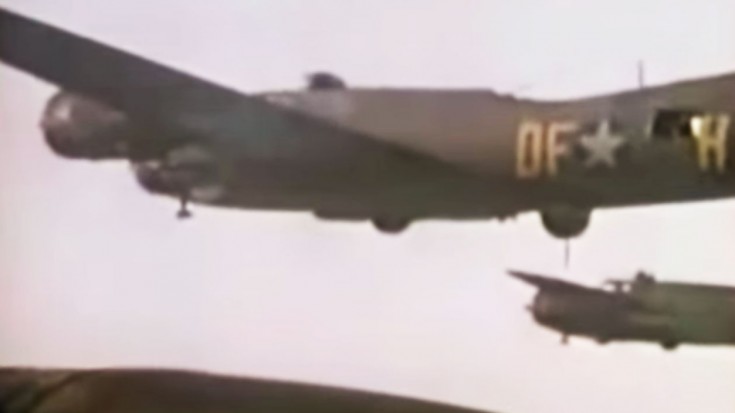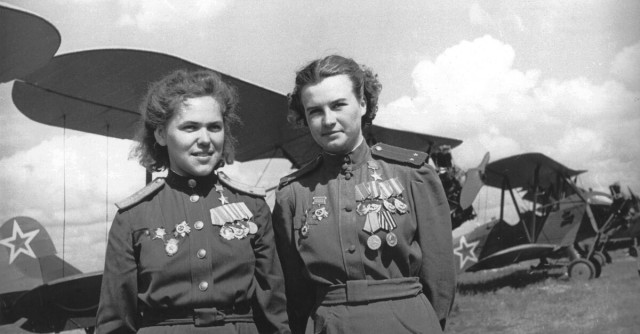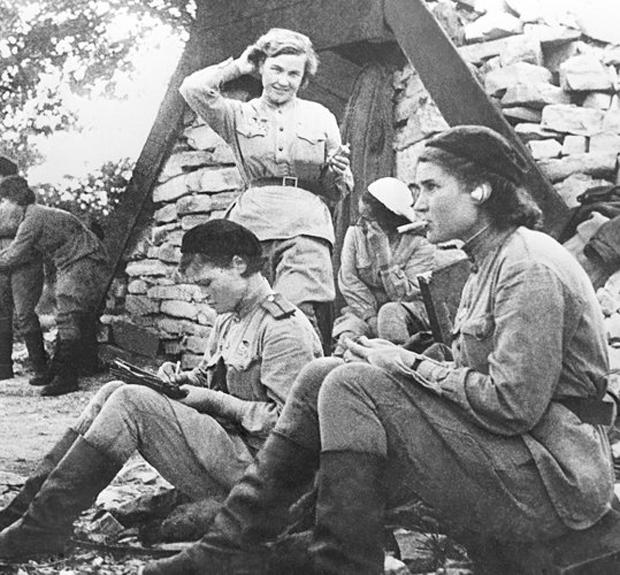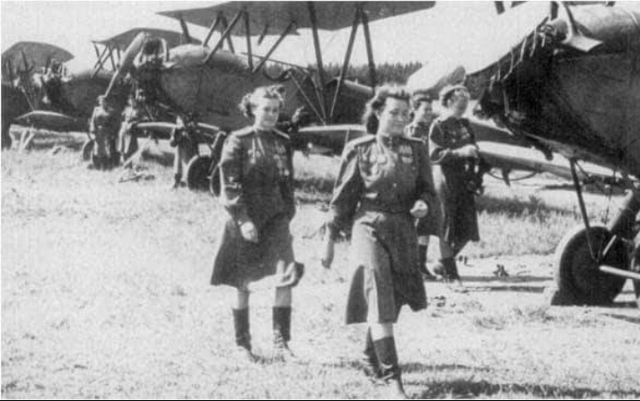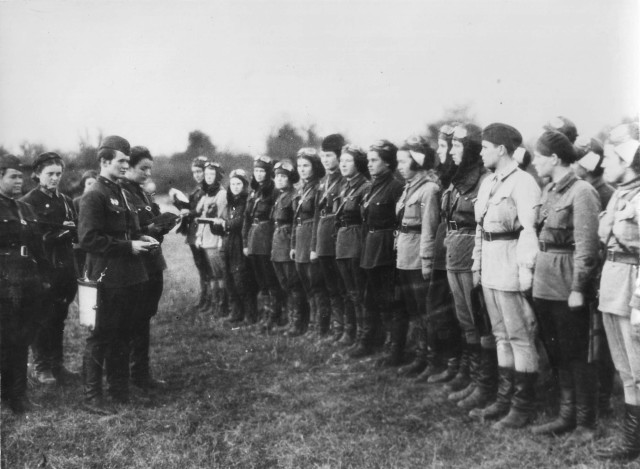You may also like
Friday, March 4, 2016
Scramble the F4F Wildcats our Carrier's Under Attack
You may also like
Wednesday, March 2, 2016
Dark Night Over The Chindwin Burma-Ki 45's Vs Wellington Bombers
Dark Night Over The Chindwin
Fly A KI 45K over Chindwin river in Burma on the night time bombing intercept.
Date: April 1944
Time: 0500 hrs.
Weather: clear
Mission:
Our flight from the 21st Sentai (squadron) has been deployed to the Naukpaw forward operation base in Burma. Unfortunately, our settling in has been disrupted by scrambled call! Bombers have been spotted near the Yu river and it appears to be heading directly here. Scramble your aircraft and head South West towards the threat. We still have another hour before daybreak so searchlights and spotters will attempt to highlight the aircraft as they pass our defense of rings near the Chindwin river. Stay sharp and look for Illuminated bombers!
Objective:
Intercept the bombers and disrupt their attack before they can bomb our base.
The Ki-45 was initially used as a long-range bomber escort. The 84th Independent Flight Wing (Dokuritsu Hikō Chutai) used them in June 1942 in attacks on Guilin, where they encountered, but were no match for Curtiss P-40s flown by the Flying Tigers. In September of the same year, they met P-40s over Hanoi with similar results. It became clear that the Ki-45 could not hold its own against single-engine fighters in aerial combat.
It was subsequently deployed in several theaters in the roles of interception, attack (anti-ground as well as anti-shipping) and fleet defense. Its greatest strength turned out to be as an anti-bomber interceptor, as was the case of the Bf 110 in Europe. In New Guinea, the IJAAF used the aircraft in an anti-ship role, where the Ki-45 was heavily armed with one 37 mm (1.46 in) and two 20 mm cannons and could carry two 250 kg (550 lb) bombs on hard points under the wings. 1,675 Ki-45s of all versions were produced during the war.
You may also like
You may also like
- RAF Bomb Japanese Bases in Burma.
Map with arrow pointing to area south of Mandalay. Aerial shots of bombs being dropped on bases below. Numerous explosions etc. Arrow on map points to Lashio. Mores excellent shots of bombs dropping and huge explosions.
Historical Background Burma emerged as a major operational arena following the succession of Allied defeats and retreats in late 1941 inflicted by Japanese forces bent on conquering India. They swept through to Burma to provide the means for a renewed assault upon India.
For their part the Allies countered by launching an than the infamous Bang-kok railway could provide. The resultant defeat in Burma was the greatest suffered by the Japanese land forces during the war. Of the approximately 330,000 Japanese troops in the theater, two thirds were killed or died of disease and starvation. 7 The campaign in Burma has been overshadowed, both contemporaneously and subsequently, by Nakajimi Ki-43 Hayabusa, codenamed "Oscar.' Mitsubishi A6M Reisen, code-named "Zero. offensive intended to retake Burma and reestablish the land supply route to China. By then the RAF, United States Army Air Force (USAAF) and the Indian Air Force were in the ascendant, having gradually achieved air superiority, provided significant assistance to the ground forces throughout their bitter hand-to-hand actions in the dense jungle of the rugged Chin Hills. Misawa gave eloquent testimony of the Allies dominance in the air when he confirmed that he only twice saw Japanese aircraft, and that their ground forces were constantly harassed by Hurricane fighter-bombers. Indeed, the Hurricane and Vengeance dive bombers were credited with virtually liquidating some Japanese positions without infantry assistance. As the XlVth Army's offensive developed, RAF, RCAF and USAAF aircraft of Troop Carrier Command transported complete Divisions from the Arakan to Imphal and to reserve in the Brahmaputa valley. That army was then supplied with men, munitions, rations and equipment throughout the rest of the Allied offensive in what became the largest and most remarkable operation by airborne forces ever attempted during the Second World War. For example, during the two months preceding the recapture of Rangoon on 2 May 1945, the airlift provided the army with over 2,000 tons of munitions and supplies daily, more events in Europe, Africa and the Pacific. As such, the Allied victory in Burma remains relatively unknown in the West as well as Japan.
Monday, February 29, 2016
Rays of the Setting Sun - J2M5's Vs B-29’s
Rays of the Setting Sun
Date: 23rd of April, 1945
Ttime: 1745
Weather: Clear
Location: Chiran
The island of Okinawa is engulfed in flames.
A Fight of incredible intensity ranges between our defenders and the enemy Marines. Our units are performing acts of incredible bravery holding off the enemy advance, and the staff is attempting to relieve the situation by employing special attack units against enemy warships. Tokkotai pilots take off from Southern Kiyushu and head south, where they independently search for enemy ships and attack them. These operations so far, where met with a great deal of success. Understandably, the enemy is very worried about this new kind of warfare. As they are apparently aware where the suicide flights originate from, the numbers of B-29's is seen over Southern Kiyushu has greatly increased. These lumbering Giants are aimed to destroy Tokkotai and our bases.
Mission briefing:
352nd Kokutai, equipped with the new J2M5 fighters, is given the task of defending the Southern Kiyushu from B-29’s.
At 1730 hours today early warning radar stations located a large NMB formation, heading towards our base. The formation is expected to be a group of B-29s escorted by P 51 Mustang's.
Air group headquarters ordered two flights of J2M5's to take off and intercept the bombers before they can unload it there deadly cargo on our location. Six army KI 100 fighters have already been scrambled and are on route to target. They will deal with the escort fighters.
Your object of: intercept the B 29's.
Your flight: 5 J2M5’s
Your orders:
Take off at 17:45 hours heading south west. The flight route is marked on your maps. After take off climb to 6400 m. The flight route should put you straight ahead of the formation, allowing for an initial pass. Try to aim for bombers glass cockpit after the attack, do not repeat the mistake of many young pilots and climb straight up. This would make you a perfect target for all the defense of guns in the vicinity. Instead you can dive and then split-S, executing a second fiery pass from below, or chandelle to the side, and execute a series of attacks on the beam from alternating directions.
Mitsubishi J2M
From Wikipedia, the free encyclopedia
| J2M Raiden | |
|---|---|
 | |
| Mitsubishi J2M Raiden (Allied code name "Jack") | |
| Role | Fighter aircraft |
| Manufacturer | Mitsubishi |
| First flight | 20 March 1942 |
| Introduction | December 1942 |
| Retired | August 1945 |
| Primary user | Imperial Japanese Navy |
| Number built | 671 |
The Mitsubishi J2M Raiden (雷電, "Thunderbolt") was a single-engined land-based fighter aircraft used by the Imperial Japanese Navy Air Service in World War II. The Allied reporting name was "Jack".
Contents
[hide]Design and development[edit]
The J2M was designed by Jiro Horikoshi, creator of the A6M Zero, to meet the 14-Shi (14th year of the Showa reign, or 1939) official specification. It was to be a strictly local-defense interceptor, intended to counter the threat of high-altitude bomber raids, and thus relied on speed, climb performance, and armament at the expense of manoeuvrability. The J2M was a sleek, but stubby craft with its over-sized Mitsubishi Kasei engine buried behind a long cowling, cooled by an intake fan and connected to the propeller with an extension shaft.
Teething development problems stemming from the Kasei engine cooling system, and the main undercarriage members led to a slowdown in production.[1] A continual set of modifications resulted in new variants being introduced with the ultimate high-altitude variant, the J2M4 Model 34 flying for the first time in August 1944. It had a 1,420 hp Kasei 23c engine equipped with a turbo supercharger (mounted in the side of the fuselage just behind the engine) that allowed the rated power to be maintained up to 9,100 m (29,900 ft) Two upward-aimed, oblique-firing (aimed at seventy degrees) 20 mm cannons, mounted in the German Schräge Musik style, were fitted behind the cockpit with the four wing cannons retained. Unresolved difficulties with the turbo supercharger caused the project to be terminated after only two experimental J2M4s were built.
You may also like
You may also like
Operational history[edit]
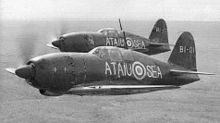
Two J2Ms of the 381 Kōkūtai inBritish Malaya being tested and evaluated by Japanese naval aviators under close supervision of RAF officers from Seletar Airfield in December 1945.
The first few produced J2M2s were delivered to the development units in December 1942 but severe problems were encountered with the engines. Trials and improvements took almost a year and the first batch of the serial built J2M2 Model 11 was delivered to 381st Kōkūtaiin December 1943. Parallel with the J2M2, production of the J2M3 Raiden Model 21 started. The first J2M3s appeared in October 1943 but deliveries to combat units started at the beginning of February 1944.
The Raiden made its combat debut in June 1944 during the Battle of the Philippine Sea. Several J2Ms operated from Guam and Saipan and a small number of aircraft were deployed to the Philippines. Later, some J2Ms were based in Chosen airfields, Genzan (Wonsan), Ranan (Nanam), Funei (Nuren), Rashin (Najin) and Konan under Genzan Ku, for defence of these areas and fighting against Soviet Naval Aviation units.
Primarily designed to defend against the Boeing B-29 Superfortress, the lack of a turbocharger handicapped the aircraft at high altitude. However, its four-cannon armament supplied effective firepower and the use of dive and zoom tactics allowed it to score occasionally. Insufficient numbers and the American switch to night bombing in March 1945 limited its effectiveness.
Two captured J2Ms were U.S. Technical Air Intelligence Command (TAIC) tested using 92 octane fuel plus methanol, with the J2M2 (Jack11) achieving a speed of 655 km/h (407 mph) at 5,520 m (17,400 ft),[2] and J2M3 (Jack21) achieving a speed of 671 km/h (417 mph) at 4,980 m (16,600 ft)
Friday, February 26, 2016
Croatia's Defenders 1944
- In Czechoslovakia, the Bratislava "oil district" was bombed. Bratislava was the site of the Apollo refinery.The Bratislava "industrial area" was bombed on May 16, 1944, the "marshalling yards" were bombed on October 14, 1944, and "the town" of Bratislava was bombed on February 7, 1945.
- CROATIAN DEFENDERS
- In Czechoslovakia, the Bratislava "oil district" was bombed. Bratislava was the site of the Apollo refinery. The Bratislava "industrial area" was bombed on May 16, 1944, the "marshaling yards" were bombed on October 14, 1944, and "the town" of Bratislava was bombed on February 7, 1945.
B-17 Going Down
As you’ll see in this historical footage, a B-17 squadron gets attacked by Nazi fighters.
B-17s dropped 640,036 tons of bombs over Europe in daylight raids alone, mainly targeting Axis airfields and arms factories but also rail yards and bridges.
Crew members dealt with very cold flights in the non-pressurized cabins, with temperature gauges in the cockpit frequently reading -40 degrees Fahrenheit. Crews stayed warm in fleece-lined uniforms.
Defense of Bratislava
Date: June 26, 1944
Situation: Air defense of Slovakia is provided by the elite emergency squadron, located at Piestany airfield.
It's members, many of them Eastern front veterans, have completed an intensive training program, consisting mostly of quick alarm starts in flights and as a squadron, simultaneously, these pilots are trained to fight against US heavy bomber formations.
Slovak airspace is under eminent threat from US Air Force. It is necessary to defend the important industrial suburbs of the capital Bratislava, and the ammunition factories in the Pezinok area.
Despite increasingly intensive USAF air activities over Slovakia, no direct encounters between the Allied Air Forces and let 13 fliers up to now. This is due to unofficial order of Headquarters to avoid fights with American planes, and keep the Slovak planes intact for an upcoming anti Nazi uprising.
No contact with American bombers was made even June 16, 1944, when the 15th USAF equipped with B 24 liberators and B-17 Flying Fortress, escorted by P 51 Mustang's and P 38 lightning's carried out a raid Bratislava. Their primary target was the Apollo oil refinery where the Civilian casualties reached 711 and an additional 585 were injured.
After the attack, members of the squadrons were accused of cowardice by the national defense ministry and the German military mission. This serious accusation was announced directly to the deputy fighters commander, nor. Let. Jurassic Puskar.
Mission: Time: 0900 hours weather: clear visibility:
German radio broadcast has announced that a strong bomber formation is approaching the southern border of Slovakia. There are B-17 flying Fortress is and B -24 Liberators bombers, escorted by P-38 Lightnings and P-51 Mustang fighters. One part of the formation was headed for the Reese factory in the Hungarian city of Gyor.
Axis Defense forces have taken off already to meet the attackers, consists of Bf 109 G's six each from JG 27 and JG 302; Bf 110 G-2's from JG 1 and 9 Bf 109's from Let 101 fighter squadron of the Hungarian Royal Air Force.
After evaluation of the situation and the information that enemy planes are approaching Let 13 air space, the base commander ordered 8 Bf 109's of Let13 to take off immediately.
Puskar, an experienced Eastern front fighter pilot who is very unhappy of being the target of an accusation of cowardice leads Let 13. This time he has decided to act. His plan is as follows: the flight is to gain a height advantage, release the drop tanks over the bomber formation, dive on them, attack quickly and escape immediately afterwards to avoid tangling with the fighter escort.
Objective: attack the heavy bombers nearing the southern border of Slovakia.
You might also like
Saturday, February 20, 2016
1941 Russian Rocket Interceptor
In Russia on 9 June 1941 the chief designer VF Bolhovitinov sent to the National Commissioner Aviation industry (NKAP) a formal request for approval of the project rocket fighter-interceptors under ozunakom BI (BI). The proposal was accepted in its entirety, with the NKAP issued a new deadline for the project documentation of only 35 days, instead of three months as was suggested in the study.
The A.Ya.Bereznyaka and AMIsaeva designed aircraft with a rocket engine thrust of 1400 kg / s. The fuel system installation caused a delay in the implementation of the project. Instead of using the turbo-compressor, it was decided that the fuel in the tank is kept at a pressure of 145-148 ATM.
The reservoir is expected to deliver 115 liters of compressed liquid fuels. This variant of the engine D-1A has become the main direction of development, and the project was identified with the label "bi".
The construction of the aircraft was self-supporting, with flat trapezoidal low-mounted wing panels. The plane itself was constructed entirely of wood.
BI-1 was flown 12 times under power, seven times with Dushkin's D-1-A-1100 engine, three times with the DM-4 ramjets, and twice with Isaev's RD-1 rocket engine.
The request for a high-speed interceptor, came with opposing requirements, including a request for minimum landing speed, as well as a low stalling speed. This issue is solved by developing special split type flaps and incorporating other aerodynamic features. Only after making the first prototype, “on the fly” so to speak were some of the problems solved. The aircraft could easily be over-stressed because of the abundance of thrust from its rocket engine and consequently there was always the extreme risk of an in-flight catastrophic structural failure. The main plane lacked any sweep back, consequently over speed conditions were always a possibility, with its resultant loss of control risks. The pilot was always conscious of the tendency to enter a high speed stall, which because of the close coupled tail, recovery would be highly unlikely. Landings too were always tricky, the split type landing flaps provided little or no extra lift so landing speeds were too high for anyone but experienced pilots to make safe landings. There was also the unfortunate sudden loss of lift when the craft entered in ground effect, which meant that soft landings were next to impossible to achieve.
BI-1 With Landing Flaps Deployed - The Split Flaps Acted as Speed Brakes but Offered Little in the way of Increased Lift
You May Also Like:
Wednesday, February 17, 2016
Russia's Feared Night Witches of WWII
The Lethal Soviet Night Witches – Russian Female Heroes Of The Air
Few people would connect broomsticks, witches and crop-sprayers to a feared group of female Russian pilots. The women pilots were members of the 588th Night Bomber Regiment of World War II. Even today not many people know about these female pilots who did so much to support their male comrades by the accurate bombing of German troops.
These women were usually aged 17 to 26 years of age used to fly on night-time bombing missions. When approaching their target, they would idle their engines and glide into their bombing points. This largely silent approach gave off a “whooshing” sound as they went by, causing the Germans to liken it to the sound of the broomsticks of witches and thus arose the name of “Nachthexen’ – Night Witches!
These girl-pilots harassed the Germans to such an extent that they were both hated and feared by them. It was said that any German pilot who managed to bring down one of the planes of a Night Witch would automatically be awarded the Iron Cross. It is no wonder that these intrepid girl-pilots bore the name ‘Night Witches’ with pride!
Stalin, after much lobbying by the renowned Russian woman pilot, Marina Raskova, finally allowed a group of females to be trained as bomber pilots and thus created three female units, one of which was the all female 588th Night Bombers Regiment. These female pilots were to be allowed to take the same roles as men who made Russia a very progressive nation.
It was the only country at the time to allow women to take part in actual combat missions. Marina Raskova herself began training suitable candidates in flying and navigating and also as maintenance and ground crews. This training of girls as war pilots was seen by the majority of the men in the air force as being of little value, but it was not long before these girl-pilots were to prove their worth and bravery in no uncertain terms.
In June of 1941, the German armies attacked Russia (Operation Barbarossa) and moved like lightning across the Russian plains catching Stalin and his armies by surprise. The Nazis devastated the Russian Military, took millions of prisoners and reached the outskirts of Moscow. The situation was critical. The Russians needed all possible manpower and were desperate for pilots and planes – the Germans had to be stopped, at whatever cost or Russia was doomed.
The female pilots of the 588th Regiment faced this challenge head on. Their planes – the Policarpov Po-2 bi-panes – were made of plywood and canvas and had mostly been used as crop-dusters, or for training. These planes were small and light and able to carry only two bombs – one under each wing.
The crew of two had to fly in an open cockpit, which meant they suffered from frozen feet and frostbite in winter. They were not helped by the fact that they were issued with unsuitable, hand-me-down male uniforms. They had no handguns, no space to carry parachutes and they had to rely on maps and compasses for navigation as they were not equipped with radar.
Should they be hit by tracer bullets, their planes would turn into a ball of fire. In spite of these heavy odds these female pilots demonstrated their extreme bravery, often flying 8-10 bombing missions over enemy-held territory, night after night.
As these planes were so small and light, the missions were very dangerous. The crews had to search for the German encampments from a very low altitude and so were easy targets, frequently coming back to base with their canvas-covered planes spattered with holes and ripped canvas from being shot up.
Sometimes they made it back to base having been set on fire by tracer bullets, often they came home with wounded crew or even worse -they did not return at all. Raskova herself was killed in action.
These little Polikarpov biplanes were able to fly very low which helped them to evade the German pilots and since the top speed of these bi-panes was less than the stalling speed of the Nazi planes they were able to manoeuvre more easily and with agility. These features thus formed the only defences the planes had. The Night Witches’ missions usually required that they flew to a nearby target, mostly behind enemy lines.
They developed a strategy whereby three planes would fly in formation, and as they neared the target, two planes would fly so as to attract the German searchlights. These two would then fly off in opposite directions, twisting and weaving to avoid the anti-aircraft guns while the third plane would slip quietly through the darkness and drop its bomb load. Something similar would be repeated until all three planes had dropped their bombs before flying back to base where they would refuel, reload and then fly off on their next mission.
During heavy fighting, there were as many as 40 planes flying per night. Almost every time these pilots had to fly through a wall of enemy fire. In all, the Night Witches flew approximately 30,000 missions and dropped 23,000 tons of bombs. This constant harassment night after night made the Germans hate the ‘Nachthexen’ even more. The tension was beginning to be felt. They suffered sleepless nights, they felt threatened and unsafe and were wearied by the constant need to be on the alert and to remain in defensive positions. While it caused German morale to fall. The cost to the 588th Night Bombers, was high, for they lost 30 of their pilots.
A commander, Nadezha Popover, who completed 852 bombing missions for the Night Bombers, died on the 8th July 2013 at the age of 91. She was quoted as having said “we had a lot of clever, educated, girls “ and “we bombed, we killed, it was part of war.”
The cleverness of the ‘Night Witches’ as much as their bravery accounted for their success. Nadezha was one of the 24 Night Witches who were recognized for their incredible determination and bravery against all the odds and who were given the ‘Hero of the Soviet Union’ award.
It was a fully deserved honor indeed!
Friday, February 12, 2016
Messerschmitt Me 163 Komet Vs B-17 Flying Fortress Bomber
The Messerschmitt Me 163 Komet, designed by Alexander Lippisch, was a German rocket-powered fighter aircraft. It is the only rocket-powered fighter aircraft ever to have been operational. Its design was revolutionary, and had performance unrivaled at the time. German test pilot Heini Dittmar in early July 1944 reached 1,130 km/h (700 mph), a flight airspeed record unmatched by turbojet-powered aircraft for almost a decade after. Over 300 aircraft were built, but the Komet proved ineffective as a fighter and was responsible for the destruction of only about nine Allied aircraft. About; 16 air victories for 10 losses, according to other sources.
Watch it go into battle in Simulated Combat.
Watch it go into battle in Simulated Combat.
You might also like
Me 262 HGII Vs MIG 9 Fargo
High-speed research
Scale model of one of the Me 262 HG III versions at the Technikmuseum Speyer
Adolf Busemann had proposed swept wings as early as 1935. Messerschmitt researched the topic from 1940. In April 1941, Busemann proposed fitting a 35° swept wing (Pfeilflügel II, literally "arrow wing II") to the Me 262,[63] the same wing sweep angle later used on both the American F-86 Sabre and Soviet MiG-15 Fagot fighter jets. Though this was not implemented, he continued with the projected HG II and HG III (Hochgeschwindigkeit, "high-speed") derivatives in 1944, which were designed with a 35° and 45° wing sweep, respectively.[64]
Interest in high-speed flight, which led him to initiate work on swept wings starting in 1940, is evident from the advanced developments Messerschmitt had on his drawing board in 1944. While the Me 262 V9 Hochgeschwindigkeit I (HG I) actually flight tested in 1944 had only small changes compared to combat aircraft, most notably a low-profile canopy — tried as the Rennkabine (literally "racing cabin") on the ninth Me 262 prototype for a short time) to reduce drag, the HG II and HG III designs were far more radical. The projected HG II combined the low-drag canopy with a 35° wing sweep and a butterfly tail. The HG III had a conventional tail, but a 45° wing sweep and turbines embedded in the wing roots.[65]
Messerschmitt also conducted a series of flight tests with the series production Me 262. In dive tests, they determined that the Me 262 went out of control in a dive at Mach 0.86, and that higher Mach numbers would cause a nose-down trim that the pilot could not counter. The resulting steepening of the dive would lead to even higher speeds and the airframe would disintegrate from excessive negative g loads.[citation needed]
The HG series of Me 262 derivatives was believed capable of reaching transonic Mach numbers in level flight[citation needed], with the top speed of the HG III being projected as Mach 0.96 at 6,000 m (20,000 ft) altitude. Despite the necessity to gain experience in high-speed flight for the HG II and III designs, Messerschmitt made no attempt to exceed the Mach 0.86 limit for the Me 262. After the war, the Royal Aircraft Establishment, at that time one of the leading institutions in high-speed research, re-tested the Me 262 to help with British attempts at exceeding Mach 1. The RAE achieved speeds of up to Mach 0.84 and confirmed the results from the Messerschmitt dive tests. The Soviets ran similar tests.
After Willy Messerschmitt's death in 1978, the former Me 262 pilot Hans Guido Mutke claimed to have exceeded Mach 1, on 9 April 1945 in a Me 262 in a "straight-down" 90° dive. This claim is disputed because it is only based on Mutke's memory of the incident, which recalls effects other Me 262 pilots observed below the speed of sound at high indicated airspeed, but with no altitude reading required to determine the actual speed. Furthermore, the pitot tube used to measure airspeed in aircraft can give falsely elevated readings as the pressure builds up inside the tube at high speeds. Finally, the Me 262 wing had only a slight sweep, incorporated for trim (center of gravity) reasons and likely would have suffered structural failure due to divergence at high transonic speeds. One airframe — the aforementioned Me 262 V9, Werknummer 130 004, with Stammkennzeichen of VI+AD,[66] was prepared as the HG I test airframe with the low-profile Rennkabine racing canopy and may have achieved an unofficial record speed for a turbojet-powered aircraft of 975 km/h (606 mph), altitude unspecified,[67] even with the recorded wartime airspeed record being set on 6 July 1944, by another Messerschmitt design — the Me 163B V18 rocket fighter setting a 1,130 km/h (700 mph) record, but landing with a nearly disintegrated rudder surface.[68][69]
Production
Underground manufacture of Me 262s
About 1,400 Me 262s were produced, but a maximum of 200 were operational at the same time. According to sources they destroyed from 300 to 450 enemy planes, with the Allies destroying about 100 Me 262s in the air.[57] While Germany was bombed intensively, production of the Me 262 was dispersed into low-profile production facilities, sometimes little more than clearings in the forests of Germany and occupied countries. Through the end of February to the end of March 1945, approximately 60 Me 262s were destroyed in attacks on Obertraubling and 30 at Leipheim;the Neuburg jet plant itself was bombed on 19 March 1945.
View the video
Scale model of one of the Me 262 HG III versions at the Technikmuseum Speyer
Adolf Busemann had proposed swept wings as early as 1935. Messerschmitt researched the topic from 1940. In April 1941, Busemann proposed fitting a 35° swept wing (Pfeilflügel II, literally "arrow wing II") to the Me 262,[63] the same wing sweep angle later used on both the American F-86 Sabre and Soviet MiG-15 Fagot fighter jets. Though this was not implemented, he continued with the projected HG II and HG III (Hochgeschwindigkeit, "high-speed") derivatives in 1944, which were designed with a 35° and 45° wing sweep, respectively.[64]
Interest in high-speed flight, which led him to initiate work on swept wings starting in 1940, is evident from the advanced developments Messerschmitt had on his drawing board in 1944. While the Me 262 V9 Hochgeschwindigkeit I (HG I) actually flight tested in 1944 had only small changes compared to combat aircraft, most notably a low-profile canopy — tried as the Rennkabine (literally "racing cabin") on the ninth Me 262 prototype for a short time) to reduce drag, the HG II and HG III designs were far more radical. The projected HG II combined the low-drag canopy with a 35° wing sweep and a butterfly tail. The HG III had a conventional tail, but a 45° wing sweep and turbines embedded in the wing roots.[65]
Messerschmitt also conducted a series of flight tests with the series production Me 262. In dive tests, they determined that the Me 262 went out of control in a dive at Mach 0.86, and that higher Mach numbers would cause a nose-down trim that the pilot could not counter. The resulting steepening of the dive would lead to even higher speeds and the airframe would disintegrate from excessive negative g loads.[citation needed]
The HG series of Me 262 derivatives was believed capable of reaching transonic Mach numbers in level flight[citation needed], with the top speed of the HG III being projected as Mach 0.96 at 6,000 m (20,000 ft) altitude. Despite the necessity to gain experience in high-speed flight for the HG II and III designs, Messerschmitt made no attempt to exceed the Mach 0.86 limit for the Me 262. After the war, the Royal Aircraft Establishment, at that time one of the leading institutions in high-speed research, re-tested the Me 262 to help with British attempts at exceeding Mach 1. The RAE achieved speeds of up to Mach 0.84 and confirmed the results from the Messerschmitt dive tests. The Soviets ran similar tests.
After Willy Messerschmitt's death in 1978, the former Me 262 pilot Hans Guido Mutke claimed to have exceeded Mach 1, on 9 April 1945 in a Me 262 in a "straight-down" 90° dive. This claim is disputed because it is only based on Mutke's memory of the incident, which recalls effects other Me 262 pilots observed below the speed of sound at high indicated airspeed, but with no altitude reading required to determine the actual speed. Furthermore, the pitot tube used to measure airspeed in aircraft can give falsely elevated readings as the pressure builds up inside the tube at high speeds. Finally, the Me 262 wing had only a slight sweep, incorporated for trim (center of gravity) reasons and likely would have suffered structural failure due to divergence at high transonic speeds. One airframe — the aforementioned Me 262 V9, Werknummer 130 004, with Stammkennzeichen of VI+AD,[66] was prepared as the HG I test airframe with the low-profile Rennkabine racing canopy and may have achieved an unofficial record speed for a turbojet-powered aircraft of 975 km/h (606 mph), altitude unspecified,[67] even with the recorded wartime airspeed record being set on 6 July 1944, by another Messerschmitt design — the Me 163B V18 rocket fighter setting a 1,130 km/h (700 mph) record, but landing with a nearly disintegrated rudder surface.[68][69]
Production
Underground manufacture of Me 262s
About 1,400 Me 262s were produced, but a maximum of 200 were operational at the same time. According to sources they destroyed from 300 to 450 enemy planes, with the Allies destroying about 100 Me 262s in the air.[57] While Germany was bombed intensively, production of the Me 262 was dispersed into low-profile production facilities, sometimes little more than clearings in the forests of Germany and occupied countries. Through the end of February to the end of March 1945, approximately 60 Me 262s were destroyed in attacks on Obertraubling and 30 at Leipheim;the Neuburg jet plant itself was bombed on 19 March 1945.
You might also like
Subscribe to:
Comments (Atom)
